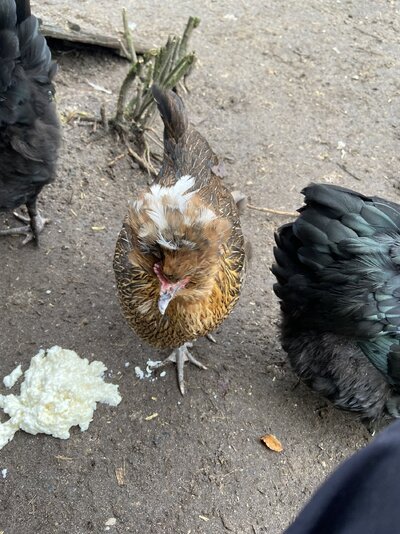I lived in Denmark for two years in the 1980's in the Copenhagen area (Herlev) but travelled to all parts of your country. Those cold temperatures sound about right. For chickens that have feathered out those temperatures are not cold, no worries there. Your problem will be more with the snow. Chickens don't like change and generally do not like waking up to a white world. Usually within a few days they get used to it and many will go out and walk in it but they could be kept in the coop section only for a few days where they can get crowded. They don't like a cold wind either. Mine just won't go out in a brisk wind. Snow and wind is more likely to cause a problem by keeping them in the coop section in winter than the cold.I’m located in Denmark. Where it rains a lot and it can get pretty cold here. I think the coldest it has been this year is around - 5 degrees and the hottest it has been is around 95 degrees.
I don't recall it ever getting anywhere near that warm. I remember fabulous summers. That had to be miserable for you since your housing is not set up for those temperatures. But provided they have shade, water, and decent ventilation on the coop your chickens should be able to survive that heat. It's getting close but you should not have any worries there.
You can follow the link in my signature to get some of my thoughts on why chickens need room. To me each situation is unique with different flock make-ups, climate, management techniques, goals, and so many other things that I don't believe in a square feet per chicken number. I strongly believe the more room you can reasonably give them the better but many chickens are very content when they are a what we consider a bit crowded while others need more room. I find the more I crowd them the more behavioral problems I have to deal with, the harder I have to work, and the less flexibility I have to deal with issues that come up. This is about you more than it is about the chickens but they benefit too if you are not stressed out.I was wondering how much space do 12 chickens need? Outside and inside so that that can live the best life possible.
How old would the chickens be that you are thinking of getting? The age difference can be important until the young ones are old enough to make their way into the pecking order, which with my pullets is usually about the time they start laying. Until that point the age difference has a lot to do with how you integrate them and manage them. But after they reach that age, an age difference is not very important as far as how you manage them. We can go into details when we know how old those new chickens will be. But as to the general question many of us have flocks with chickens of varying ages.Another question is chickens live in the same coop even though they have a age difference? Bc I was thinking that when I get my next set of chicken I would wanna get some that are younger that my current flock but is that a good idea?
Is your concern size or the feathers and top knot? It sounds like you have a bantam Polish. How is that working out with your rooster and flock? Are the Silkies you are planning to get bantams, not all are? If size is your concern, when chickens mate the hen squats. That gets her body on the ground so the rooster's weight goes into the ground through her body, not just her legs. That enables the hen to support a larger male. His feet spread out to get his weight into her body more gradually than at a sharp point, but the more weight difference the more risk there is from that. Many people keep large fowl roosters with bantam hens without issues but that is not totally without risk. The English Araucana rooster should weight about 3 kg (6.5 pounds) which isn't that large. With living animals I can't give you any guarantees but I would not be overly concerned.I also really want to have some silkies but is that possible with a English araucana rooster?
If the concern is due to appearance, either the different feathers or the crest, sometimes the chickens will pick on a different looking chicken. They don't always but some people have mentioned that. Silkies and Polish are often mentioned. It's usually the hens that cause a problem when you have it but since they are living animals I can't guarantee anything about your rooster. Many people integrate without these problems but some people mention them.
Integration takes more room than after they are fully integrated, regardless of age. Juveniles tend to take more room until they mature. Many people on here can help you out with integrating, we do it all of the time. Usually very successfully but it is not without risk. There are techniques that greatly reduce your risk.
I don't anticipate you having unsurmountable issues in the summer, either with integration or them just living together. Do your integration is summer. In winter you may be OK but wind or snow could cause issues.




